The NVIDIA SHIELD Tablet Review
by Joshua Ho on July 29, 2014 9:00 AM ESTGPU Benchmarks
On the GPU side, the Tegra K1's GPU is derived from the same Kepler GPU architecture we've seen in notebooks and desktops - albeit in a single SMX configuration. There are some power focused changes to mobile Kepler, and I’d reference our initial article on Tegra K1’s architecture for those interested in learning more. In this device, the GPU can run anywhere between 72 MHz to 852 MHz.
I included Surface Pro in a couple of the tests below just to show how far NVIDIA's Shield Tablet and Tegra K1 get in terms of pushing the envelope in gaming performance. Tegra K1 can deliver better GPU performance than the original Surface Pro, and given its price and thermal constraints isn't too far off of the newer Surface Pro tablets as well.
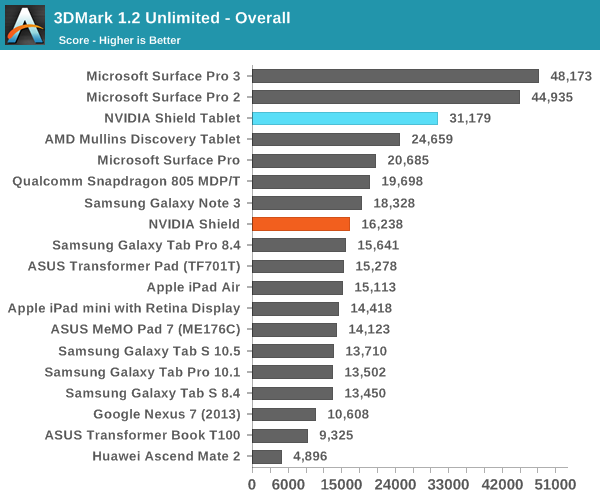
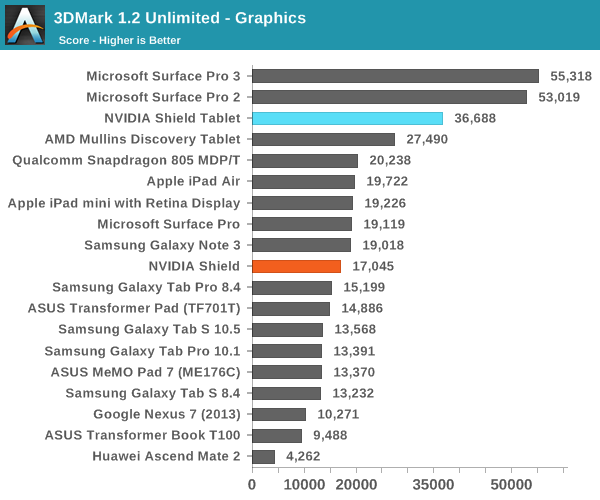

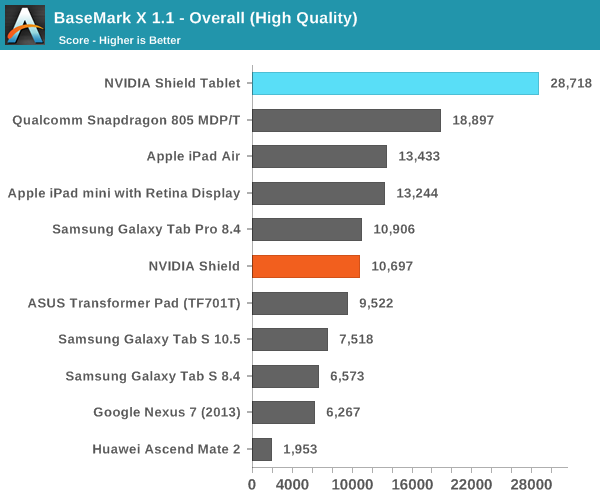
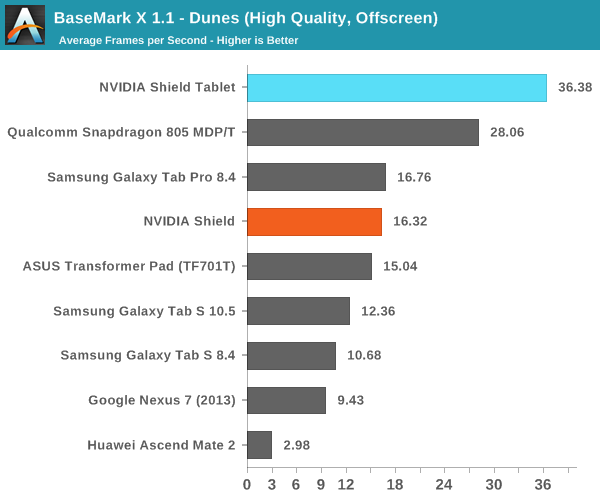
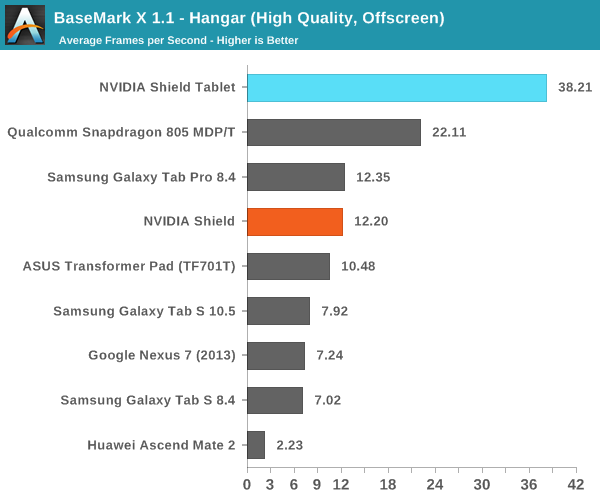
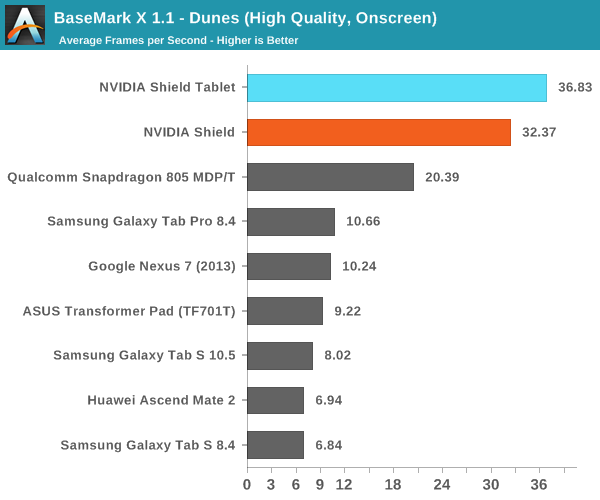
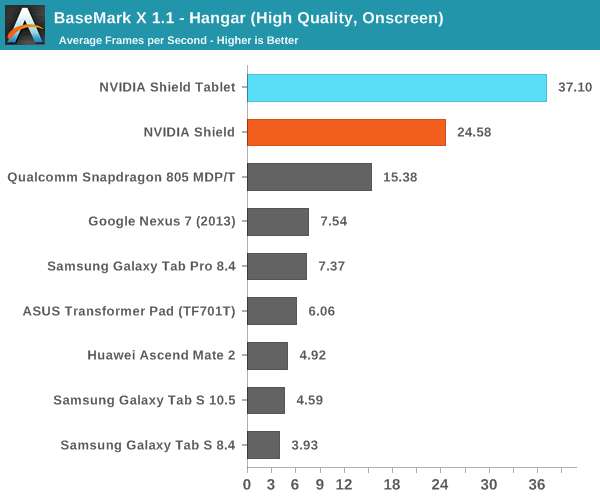
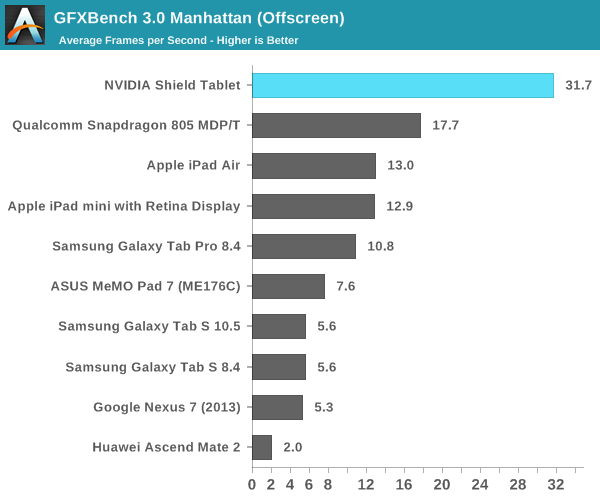
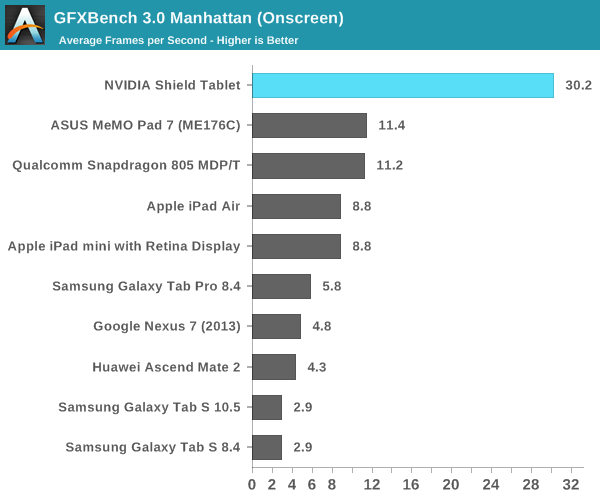
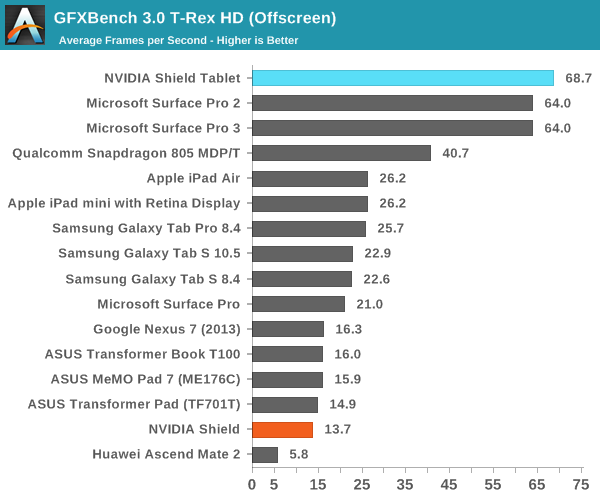
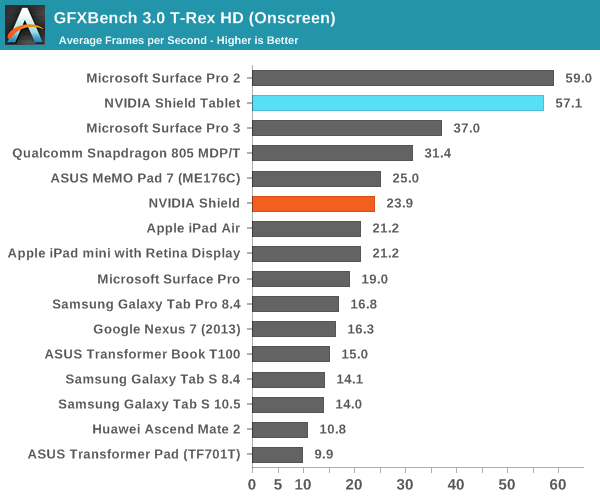
When it comes to GPU performance, there’s really no question: the Tegra K1 is easily the fastest in all of our GPU benchmarks. It handily beats every other ARM SoC, including the newest generation of SoCs such as the recently introduced Snapdragon 805 and its Adreno 420 GPU. It's worth noting that the Snapdragon 805 is likely aimed more at smartphones than tablets, although we are looking at its performance in Qualcomm's tablet development platform here. Until we get a look at Snapdragon 805 power consumption we can't really draw any perf/watt conclusions here. Ultimately, the only thing that can top the Shield Tablet is Surface Pro line, which uses more powerful laptop-class hardware.










174 Comments
View All Comments
surbringer - Tuesday, July 29, 2014 - link
Have you tried to run PPSSPP on it ?kyuu - Wednesday, July 30, 2014 - link
I can run PPSSPP on my Venue 8 Pro, and the K1 in this tablet is certainly much more powerful GPU-wise than Bay Trail. Shouldn't be an issue.Johnny_k - Tuesday, July 29, 2014 - link
Correction: you now can use Gamestream outside your house, (even over lte on the lte tablet version)Remotely access your PC to play your games away from your home.
http://shield.nvidia.com/play-pc-games/
Note that it is in beta
RoninX - Tuesday, July 29, 2014 - link
I'd love to see Anandtech do a real-world test on how well Gamestream works with the Shield outside the home.chizow - Tuesday, July 29, 2014 - link
Yes, unfortunate AT did not cover this at all, as I also recently found out GameStream remote was in beta. This is really the killer-app for Shield until Android gaming takes off (if it ever does). I would consider buying one of these if Remote GameStream worked decently well, but I'll probably hold off on either a Shield Portable 2 (with TK1) or a good GeForce bundle with Maxwell.ams23 - Tuesday, July 29, 2014 - link
I am impressed that Shield tablet has even higher graphics performance in GFXBench 3.0 T-Rex HD Offscreen than the actively cooled Surface Pro 2 and Surface Pro 3: http://images.anandtech.com/graphs/graph8296/65868...Note that thermal throttling behavior on Shield tablet is extremely good. There was virtually no throttling until after 115 runs (!) with the GFXBench 3.0 T-Rex HD benchmark: http://images.anandtech.com/doci/8296/TRexRunDownG...
I suspect that the 3dmark Unlimited scores are CPU-limited to some extent. Shield tablet already achieves > 200 fps on game test 1 and > 100 fps on game test 2, so this particular test is not very stressful (relatively speaking) for this GPU.
The web browsing battery life is pretty good all things considered, especially compared to iPad Mini Retina and iPad Air (which have 23% and 64% more battery capacity, respectively than Shield tablet). The Shield tablet has CPU and browser performance that is at least 2x faster than Nexus 7 2013 variant, so the web browsing efficiency is actually quite good in comparison.
UpSpin - Wednesday, July 30, 2014 - link
agreed, those results are impressive and a huge step forward, for both NVidia and all the others.Considering that the Shield uses the ancient quad core 32-bit Cortex A15 variant of the Tegra K1 and NVidia also has a custom dual core 64-bit variant of the K1 I think we can expect a further CPU boost once this 64-bit SoC reaches customers.
jospoortvliet - Thursday, July 31, 2014 - link
The A15r3 is not exactly ancient but I agree that Denver is something to look forward to 😎Anonymous Blowhard - Tuesday, July 29, 2014 - link
>Games like Saints Row 3 played as if running on a consoleSo, 720p30, Low Detail? ;)
Death666Angel - Tuesday, July 29, 2014 - link
Zing! :D